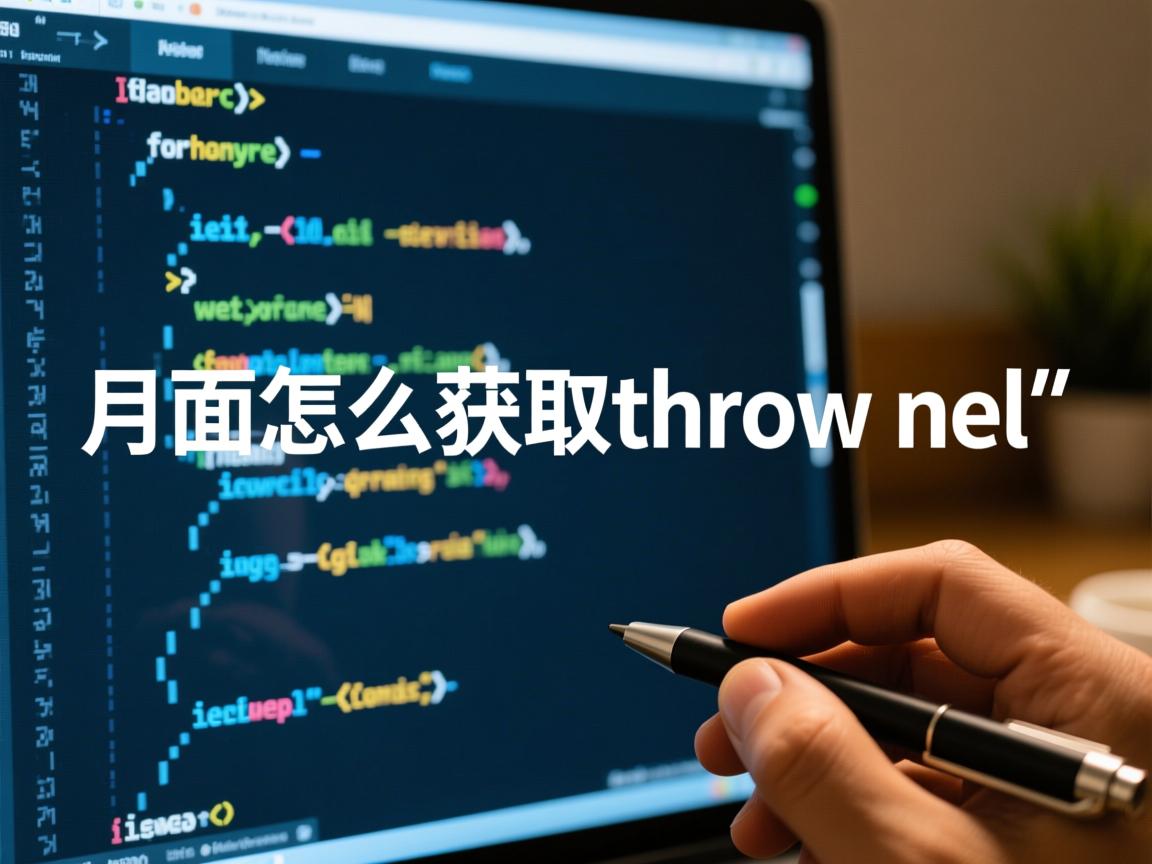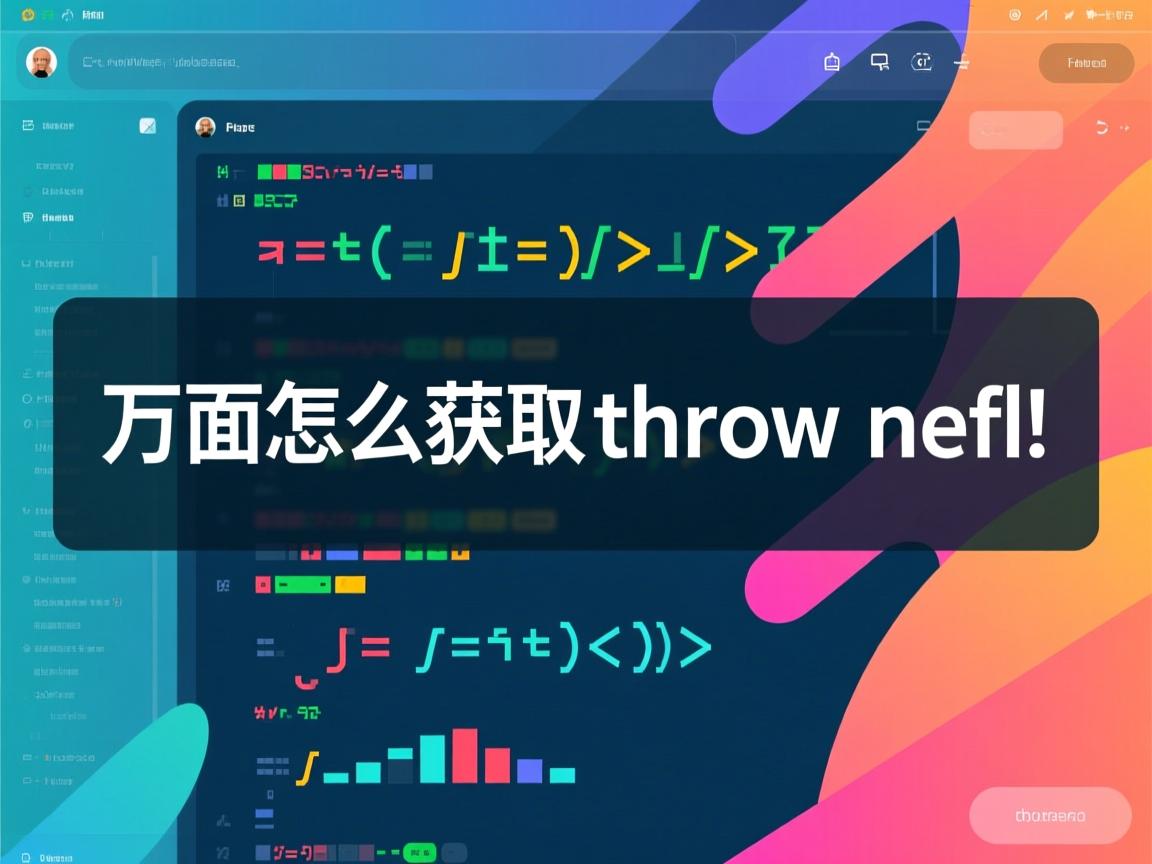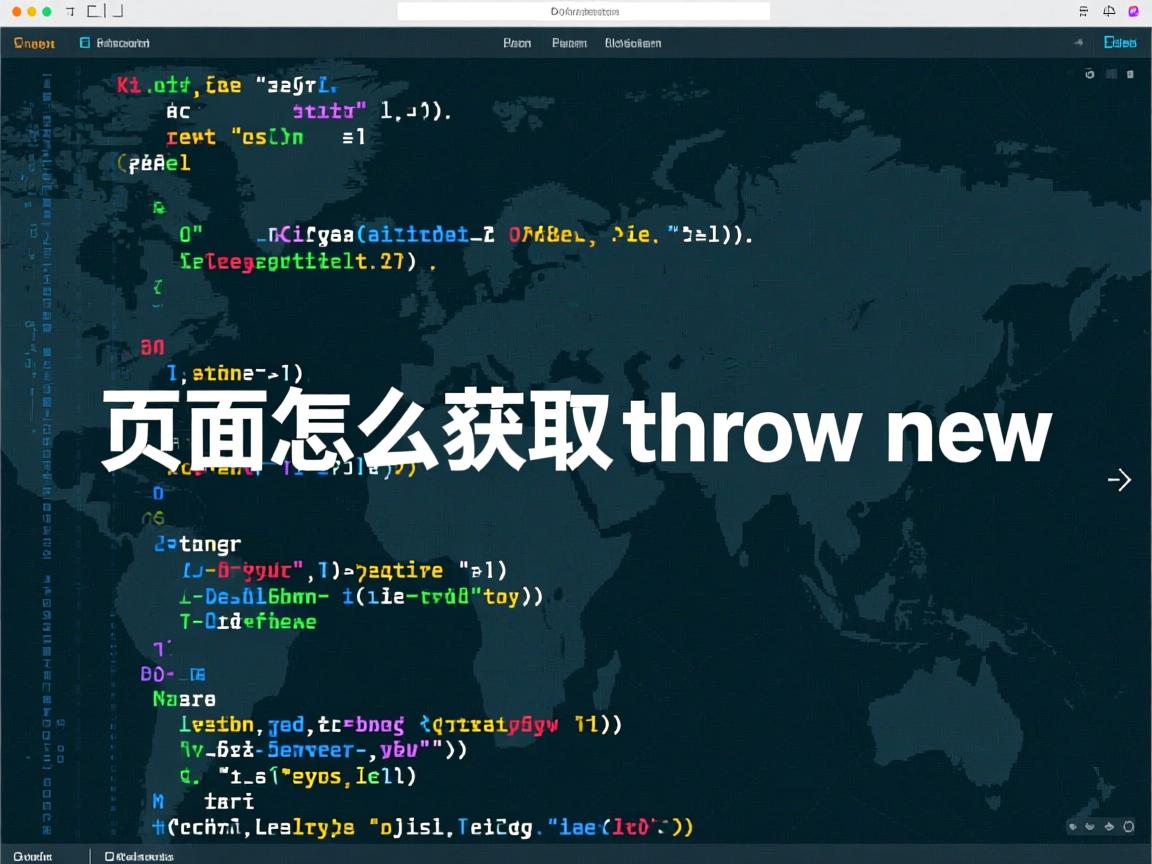Java页面中,可以通过捕获异常来获取
throw new抛出的异常信息,使用try-catch块捕获并处理异常,然后通过e.
Java Web开发中,页面获取throw new异常信息通常涉及到后端异常处理和前端展示,以下是详细的步骤和方法,帮助你在Java页面中捕获并展示throw new抛出的异常信息。
理解throw new的作用
throw new用于在Java代码中主动抛出异常。
throw new IllegalArgumentException("参数不合法");
这行代码会立即终止当前方法的执行,并将异常抛给调用者处理。
后端异常处理
为了在页面上展示异常信息,首先需要在后端捕获并处理这些异常,常见的做法包括使用全局异常处理器或在每个方法中进行异常捕获。

1 使用全局异常处理器(Spring Boot示例)
如果你使用的是Spring Boot,可以通过@ControllerAdvice和@ExceptionHandler来全局处理异常。
import org.springframework.http.HttpStatus;
import org.springframework.http.ResponseEntity;
import org.springframework.web.bind.annotation.ControllerAdvice;
import org.springframework.web.bind.annotation.ExceptionHandler;
@ControllerAdvice
public class GlobalExceptionHandler {
@ExceptionHandler(Exception.class)
public ResponseEntity<String> handleException(Exception e) {
// 记录日志
System.err.println("捕获到异常: " + e.getMessage());
// 返回错误信息给前端
return new ResponseEntity<>(e.getMessage(), HttpStatus.INTERNAL_SERVER_ERROR);
}
}
2 在控制器中捕获异常
如果不使用全局异常处理器,可以在每个控制器方法中进行异常捕获。
import org.springframework.web.bind.annotation.GetMapping;
import org.springframework.web.bind.annotation.RestController;
@RestController
public class MyController {
@GetMapping("/test")
public String test() {
try {
// 可能抛出异常的代码
throw new IllegalArgumentException("参数不合法");
} catch (Exception e) {
// 捕获异常并返回错误信息
return "错误: " + e.getMessage();
}
}
}
前端展示异常信息
前端需要接收后端返回的错误信息并进行展示,以下以JavaScript和HTML为例。

1 使用AJAX请求
假设你使用AJAX向后端发送请求并处理响应。
<!DOCTYPE html>
<html lang="zh-CN">
<head>
<meta charset="UTF-8">异常处理示例</title>
</head>
<body>
<button id="testBtn">测试异常</button>
<div id="result"></div>
<script>
document.getElementById('testBtn').addEventListener('click', function() {
fetch('/test')
.then(response => {
if (!response.ok) {
return response.text().then(text => { throw new Error(text) });
}
return response.text();
})
.then(data => {
document.getElementById('result').innerText = data;
})
.catch(error => {
document.getElementById('result').innerText = '捕获到异常: ' + error.message;
});
});
</script>
</body>
</html>
2 使用Fetch API
上述代码使用了Fetch API来发送请求并处理响应,如果响应状态码不是200,则读取响应体并将其作为错误抛出,然后在catch块中捕获并展示错误信息。
结合表格展示异常信息
你可以将异常信息以表格形式展示在页面上,便于用户查看。

<!DOCTYPE html>
<html lang="zh-CN">
<head>
<meta charset="UTF-8">异常处理示例</title>
<style>
table {
border-collapse: collapse;
width: 50%;
margin: 20px auto;
}
th, td {
border: 1px solid #ddd;
padding: 8px;
}
th {
background-color: #f2f2f2;
}
</style>
</head>
<body>
<button id="testBtn">测试异常</button>
<table id="errorTable">
<thead>
<tr>
<th>错误类型</th>
<th>错误信息</th>
</tr>
</thead>
<tbody></tbody>
</table>
<script>
document.getElementById('testBtn').addEventListener('click', function() {
fetch('/test')
.then(response => {
if (!response.ok) {
return response.text().then(text => { throw new Error(text) });
}
return response.text();
})
.then(data => {
const tableBody = document.querySelector('#errorTable tbody');
tableBody.innerHTML = ''; // 清空现有内容
const row = tableBody.insertRow();
const cellType = row.insertCell(0);
const cellMessage = row.insertCell(1);
cellType.textContent = '成功';
cellMessage.textContent = data;
})
.catch(error => {
const tableBody = document.querySelector('#errorTable tbody');
tableBody.innerHTML = ''; // 清空现有内容
const row = tableBody.insertRow();
const cellType = row.insertCell(0);
const cellMessage = row.insertCell(1);
cellType.textContent = '错误';
cellMessage.textContent = error.message;
});
});
</script>
</body>
</html>
相关问答FAQs
Q1: 如何在Spring Boot中自定义异常响应?
A1: 在Spring Boot中,你可以通过@ControllerAdvice和@ExceptionHandler来自定义异常响应,可以返回一个JSON对象包含错误码和错误信息,或者根据不同的异常类型返回不同的HTTP状态码。
Q2: 前端如何处理多个异常类型?
A2: 前端可以根据捕获到的异常类型进行不同的处理,在catch块中判断error.name或`error.


